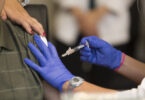ATHENS, Ga. – Babies born with low weights are more prone to sickness and have a higher death rate than babies born with normal weights. Scientists do not yet know exactly why some babies are born with low birth weights but a researcher at the University of Georgia is working to find out.
Among industrialized nations, the United States has one of the highest rates of babies born with low birth weights, said Mary Alice Smith, an environmental health scientist with UGA’s College of Agricultural and Environmental Sciences.
According to the National Center for Health Statistics, around 4 million babies are born each year in the United States. About 7.6 percent of them are born with low birth weights – less than 2,500 grams, or about 5.5 pounds.
In Georgia, 8.6 percent of newborns are low-birth-weight babies. That’s one of the highest rates in the country. About 65 percent of all infant deaths in the United States can be attributed to low birth weights, Smith said. It’s a problem nobody can explain. But there are clues.
“We know that women who have infections during pregnancy have a higher risk of delivering babies with lower birth weights,” she said.
Smith focuses her research on understanding how different levels of bacteria and the infections they cause in the mother’s body might affect her baby’s development. During pregnancy, a woman’s immune system changes so her body won’t fight or reject the developing baby inside. This makes her more susceptible to infections. But in many cases, Smith said, the mother may never know she had an infection or that the infection threatened her baby.
Campylobacters are microorganisms found in the mouth when a person has periodontal disease and in foods like poultry products. Exposure to Campylobacter can cause stillbirths in cattle and sheep and has been found in stillbirths in humans. Smith is using mice to investigate how this may occur.
Mice infected with Campylobacter have an increased number of low birth-weights, Smith said. The microorganism was found in the placentas (the organ in pregnant mammals that feeds the fetus) of mouse fetuses with low birth weights but not in placentas of normal-weight fetuses.
“This suggests that the bacteria, or the placenta’s immune responses to the bacteria, are affecting the growth of the fetus,” she said.
Smith is doing similar research with Salmonella and Listeria. Healthy adults and children can occasionally become infected with Listeria but rarely show signs of sickness. It can be deadly, though, for unborn babies. The Centers for Disease Control and Prevention estimate that Listeria causes 500 deaths in the United States each year. Of these, more than 100 are stillbirths.
A pregnant woman can be exposed to Listeria and not know it. And if the pathogen has time to reach her unborn baby, it could kill it.
Smith hopes her research leads to better ways to detect infections during pregnancy and to understand what levels of these pathogens cause problems during pregnancy. This could, in turn, lead to efficient treatments for infections and reduce the rate of low birth weights and the sickness and death associated with it.







